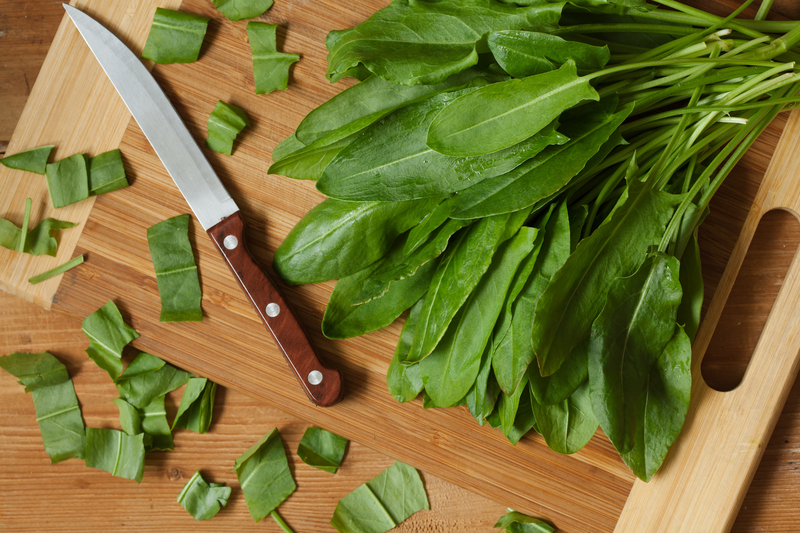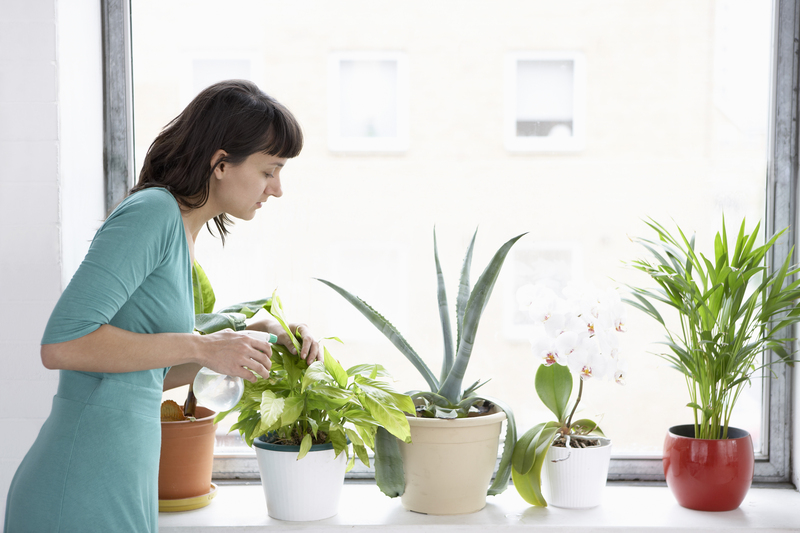Master the Art of the Moveable Garden with These 3 Tricks
Gardening has long been associated with stability, roots, and planting your passions in one permanent location. But what if your lifestyle--or your creative instincts--demand something more flexible? Enter the moveable garden. For urban dwellers, renters, balcony enthusiasts, and anyone who values versatility and innovation, moveable gardens are a game-changing solution. Whether you wish to optimize sunlight, conserve space, or give your green thumb a new challenge, mastering the art of the flexible garden will breathe new life into your horticultural pursuits. In this guide, we'll reveal three effective tricks to help you create and maintain a garden that goes where you do, all while offering lush beauty and abundant harvests.
What is a Moveable Garden?
A moveable garden--also known as a portable garden, mobile garden, or flexible gardening setup--refers to planting systems that aren't fixed in one place. You can shift these gardens from indoors to outdoors, wheel them into better sunlight, or rearrange them to suit changing needs and spaces. This innovative approach offers benefits such as:
- Space Maximization: Perfect for small patios, balconies, or rental properties.
- Sunlight Optimization: Easily move your plants according to the sun's path.
- Frost Protection: Relocate sensitive plants indoors during chilly nights.
- Design Flexibility: Redesign your landscape or interior anytime you wish.
- Soil and Pest Management: Avoid soil-borne diseases and pests by adjusting locations as needed.
Now, let's dig into the top three tricks that will help you master the art of creating and caring for your personalized moveable garden oasis.

Trick #1: Choose Clever Containers and Mobile Planters
The foundation of any moveable garden is the container. The right pots, planters, and growing systems will enhance mobility, plant health, and style. Here's how to get started:
Select Lightweight Materials
- Plastic, resin, and fiberglass containers are lightweight alternatives to traditional ceramic or terracotta pots. They're easy to carry and often come with integrated drainage.
- Grow bags: Flexible, collapsible, and breathable, fabric grow bags are perfect for most herbs, vegetables, and even dwarf trees.
- Self-watering containers: These help reduce water frequency and ensure plants stay hydrated while you move them around.
Pro Tip: For larger plants or trees, look for containers with wheels or casters attached. This allows you to shift heavy items with minimal effort, turning your garden truly portable.
Innovative Planter Ideas
- Trolley planters: Repurpose old shopping trolleys, carts, or wheelbarrows as dynamic garden beds on wheels.
- Window boxes with brackets: These can be easily installed and moved between window sills, balconies, or porch railings.
- Vertical gardens: Use hanging shoe organizers, mounted pallets, or modular living wall systems to create lush, mobile vertical gardens!
When selecting containers for your portable garden, ensure they have adequate drainage holes, and use saucers or trays to protect floors and surfaces when moving indoors or onto decks.
Trick #2: Master Soil, Water, and Plant Selection for Portability
Your moveable garden's success hinges on healthy soil, proper watering techniques, and the right choice of plants. Here's how to optimize these elements for mobility:
Lightweight, High-Quality Soil Mixes
- Use all-purpose potting soil mixed with compost for nutrition. Avoid using regular garden soil in containers--it's too dense and heavy.
- Add perlite or vermiculite to improve drainage and decrease overall weight.
- Layer a base of lightweight materials: Try shredded coco coir, recycled plastic, or pebbles to keep containers from becoming too bottom-heavy.
Smart Watering Solutions
- Self-watering inserts or reservoirs: Perfect for frequent shifters or forgetful gardeners.
- Grouping plants with similar irrigation needs ensures you don't over- or under-water different species when rearranging.
- Mulch the surface with bark, pebbles, or coconut husk to help retain moisture, especially if your plants are frequently outdoors.
Plant Choices for a Flexible Garden
The best plants for a mobile gardening system share several qualities: resilience to movement, compact root systems, and adaptability to varied light and microclimates.
- Herbs: Basil, parsley, mint, chives, thyme, and oregano thrive in containers and can be easily shifted to a kitchen window or balcony for daily harvests.
- Leafy greens: Lettuce, spinach, and arugula grow quickly in pots, making them perfect for moveable gardens.
- Small fruiting plants: Strawberries, dwarf tomatoes, and mini bell peppers add color and yield in compact systems.
- Ornamentals: Petunias, marigolds, pansies, and dwarf zinnias offer vibrant visual interest year-round.
- Succulents and cacti: These are lightweight, drought-hardy, and look stunning as portable houseplants or patio accents.
Trick #3: Strategic Placement and Seasonal Flexibility
The primary benefit of a moveable garden is adaptability. To maximize this advantage, you need a plan for strategic plant placement and knowledge of seasonal needs:
Chase the Sun
Plants need the right balance of sunlight to thrive. With a moveable garden, you can:
- Shift containers to catch morning or afternoon light as the sun's angle changes with the seasons.
- Rotate plants to prevent lopsided growth and encourage uniform foliage.
- Shield delicate species from harsh midday sun by bringing them into sheltered or partial-shade locations.
Plan for Protection
- Wind and weather: Use mobile planters to quickly move sensitive plants indoors or behind windbreaks during storms.
- Heavy rainfall or frost: Avoid waterlogged roots and cold damage by placing your garden under an awning, eaves, or inside a greenhouse as needed.
- Urban challenges: Relocate plants away from construction dust, pollution, or shifting building shadows in city environments.
Redesign Your Garden Anytime
- Rearrange for special occasions: Beautify patios and entryways by clustering flowering containers for parties or outdoor meals.
- Refresh your view: Swap the placement of color or edible plants with the seasons for year-round interest.
- Experiment with microclimates: Test various corners of your home or yard to find the best environment for each plant.
Additional Tips for the Aspiring Portable Gardener
- Use sturdy trays to catch water and soil while moving planters across floors or carpets.
- Label containers with plant names, care instructions, and movement preferences (sun, shade, indoor, outdoor) to streamline your gardening routine.
- Invest in garden dollies or rolling caddies for easier transport of larger containers.
- Consider vertical storage racks for off-season or infrequently used planters.
- Regularly assess plant health after moves; some species may need a few days to adjust to new locations or light conditions.
Eco-Friendly Benefits of a Mobile Garden
Moveable gardens aren't just convenient; they're sustainable! By maximizing plant survival through weather and climate changes, you reduce waste. Portable systems also encourage reuse of containers, soil, and water. Plus, you can frequently refresh your setup with cuttings, division, or companion planting, further minimizing environmental impact.

Frequently Asked Questions about Moveable Gardening
Is it possible to grow a full vegetable garden in moveable containers?
Absolutely! Many vegetables, from tomatoes to carrots, can thrive in containers with the right soil depth, sunlight, and watering. Choose compact or dwarf varieties for the best mobility.
How often should I move my portable garden?
Not too often. Plants benefit from stable environments to establish roots and acclimate to light levels. Only move them when necessary (seasonal change, pest concerns, or redecorating).
What's the best way to move large planters safely?
Always use dollies or rolling plant stands for heavy containers and secure the base to avoid tipping. For delicate plants, support the stems and gently relocate during cooler hours to reduce shock.
Are there any plants that don't do well in a moveable garden?
Large trees or extremely deep-rooted species generally require fixed positions. Stick with compact, shallow-rooted, or container-friendly plants for best results.
In Conclusion: Cultivate Freedom with a Moveable Garden
The moveable garden is more than a trend--it's a revolutionary approach to horticulture that offers unprecedented flexibility and creativity. By mastering the art of clever containers, optimizing for portable plant health, and leveraging strategic placement, gardeners of all skill levels can design a thriving oasis that moves, adapts, and grows with them.
Whether you're a city dweller with a high-rise balcony, a renter seeking temporary beauty, or a creative experimenter, these three tricks will empower you to unlock the possibilities of the portable garden lifestyle. Why settle for rooted when your green dreams can roam?
Start your journey today: select your favorite containers, choose your resilient plants, and embrace the endless possibilities of a moveable garden--one that thrives wherever life takes you.